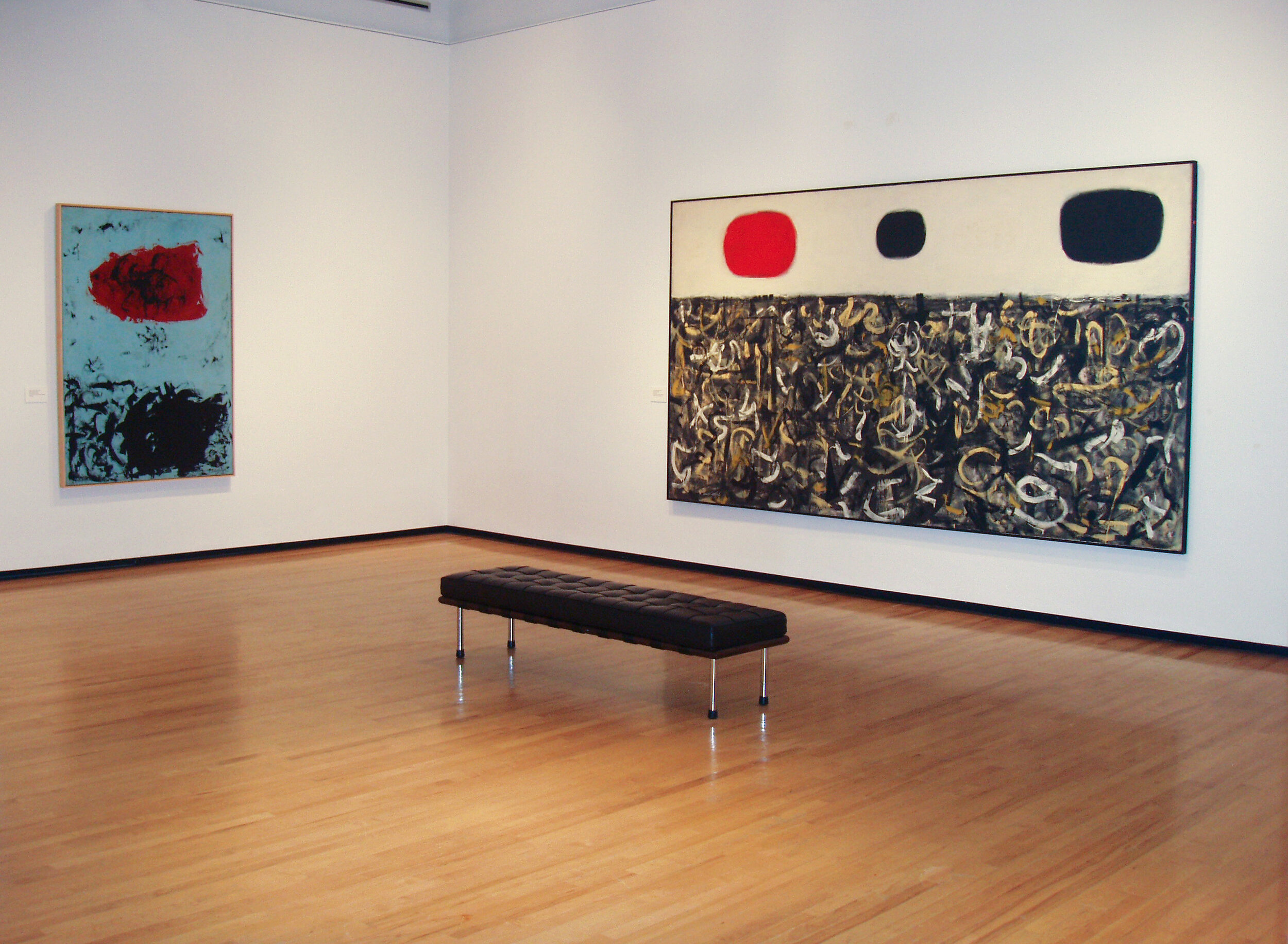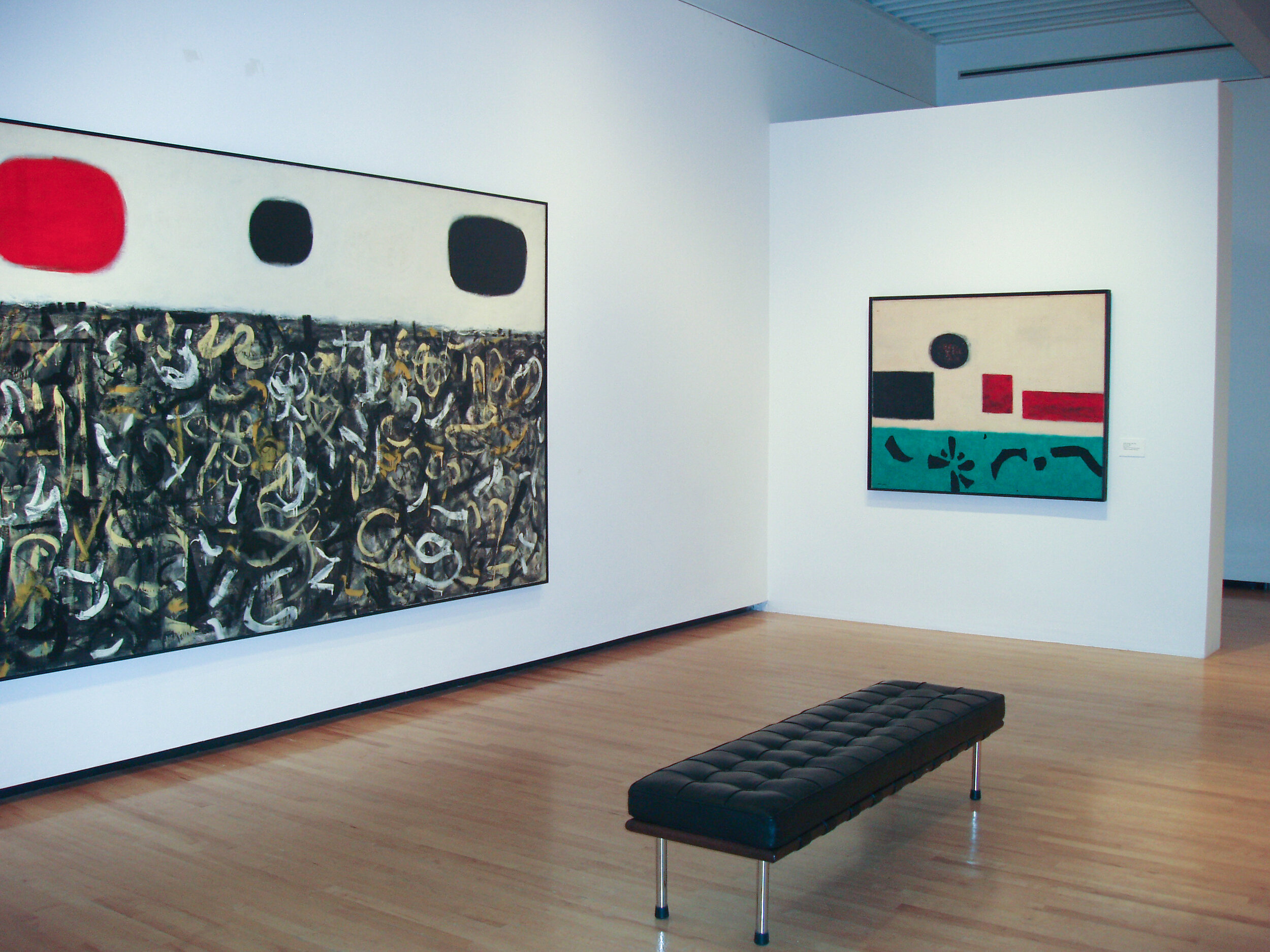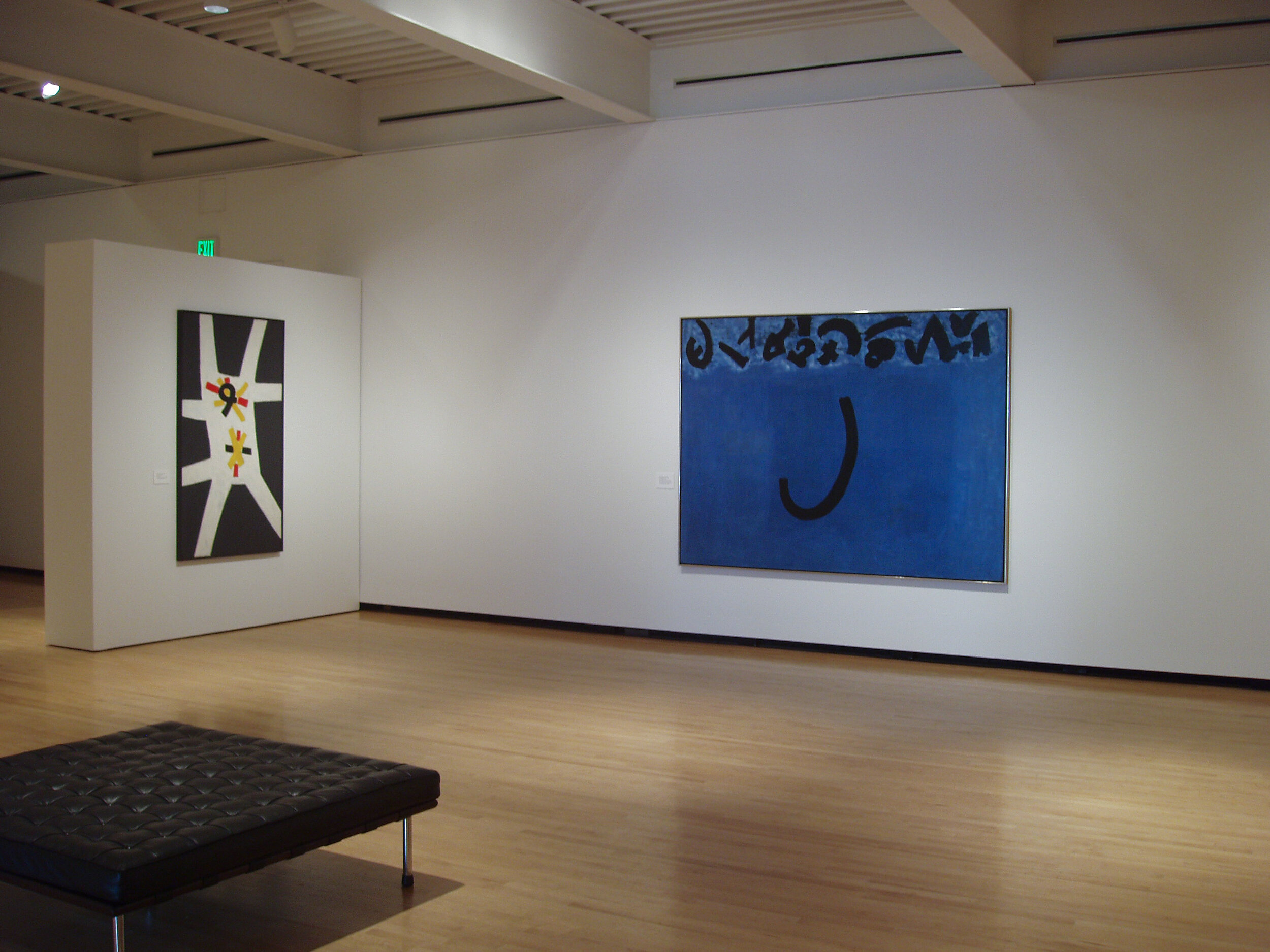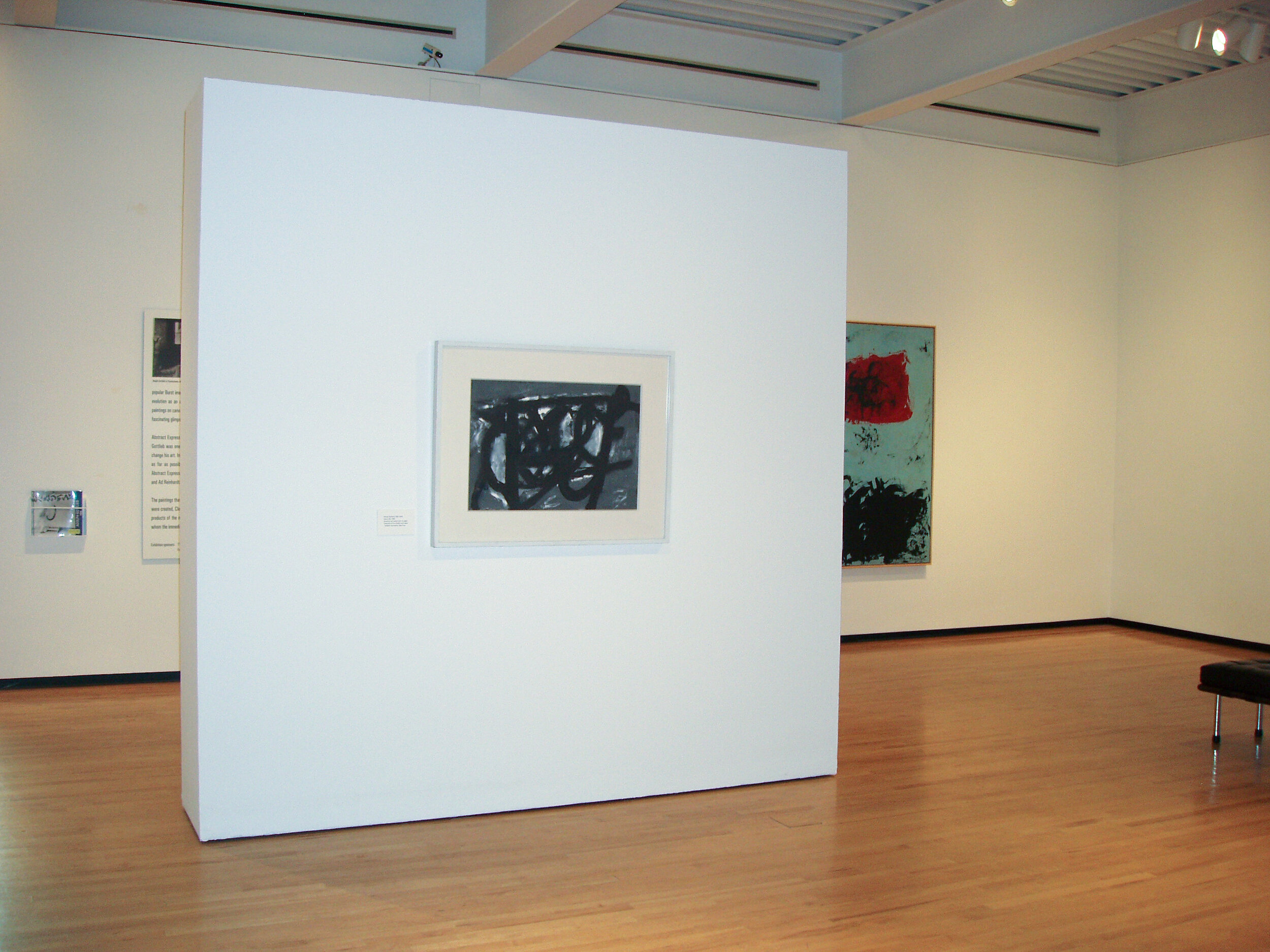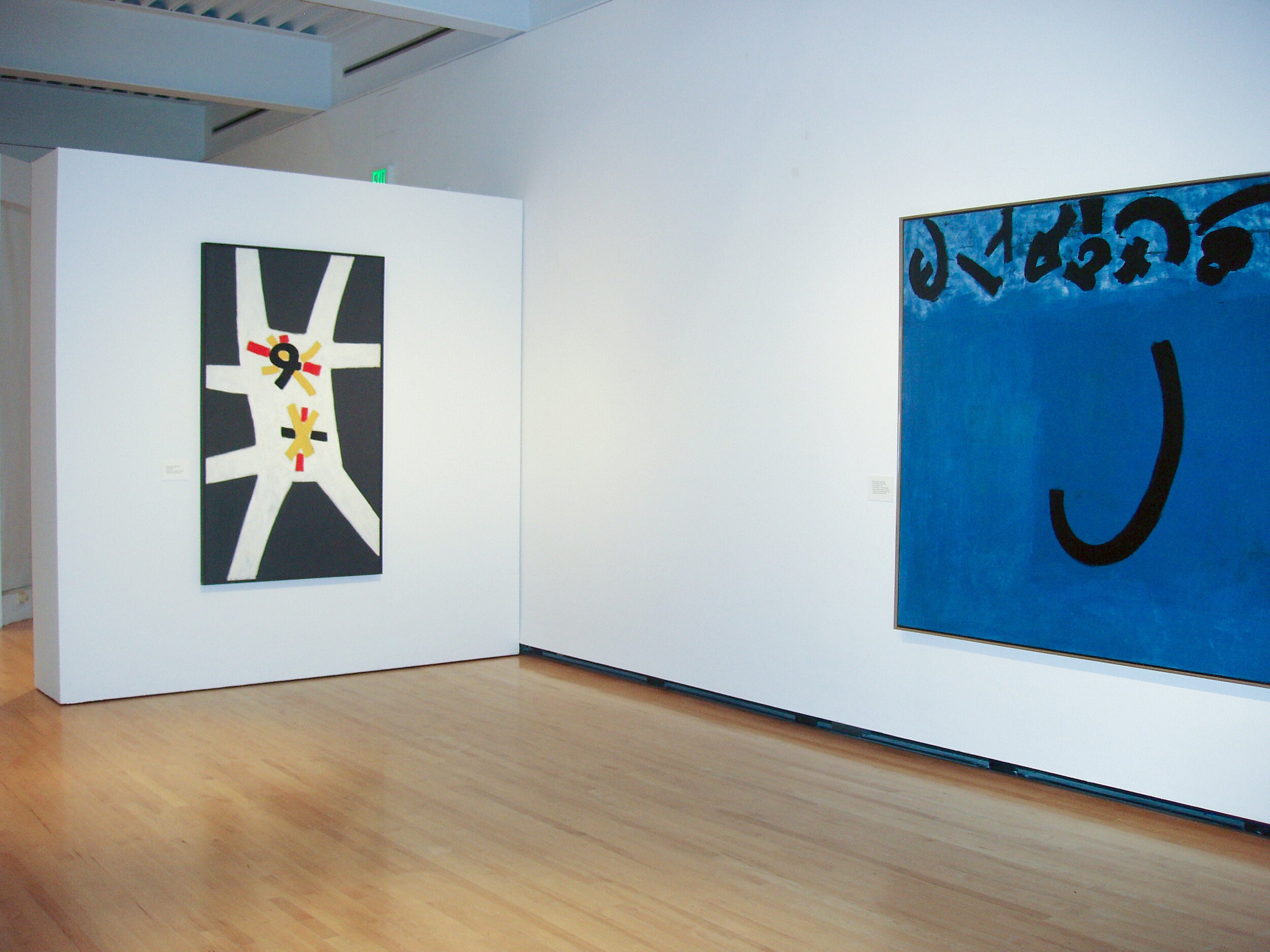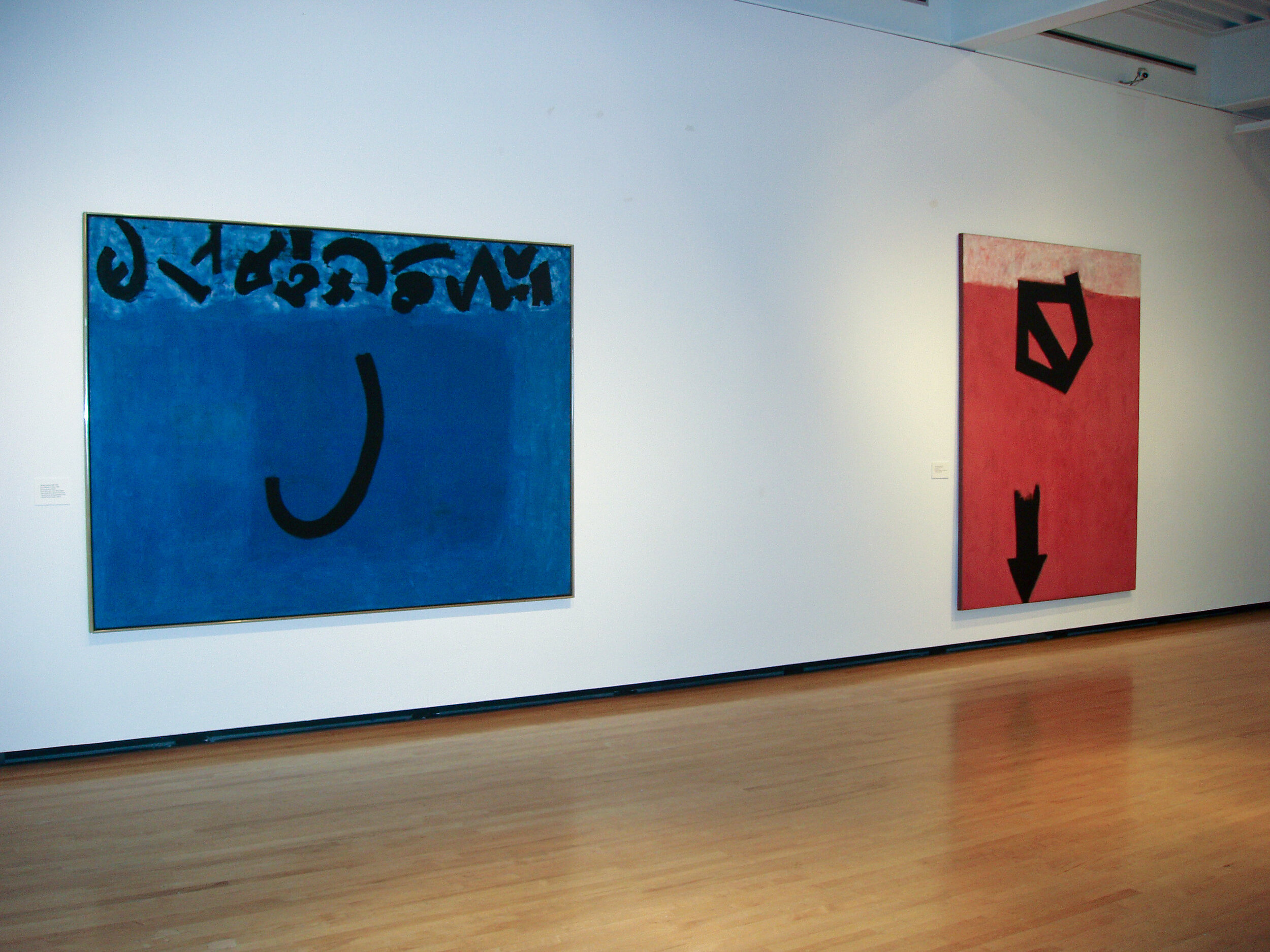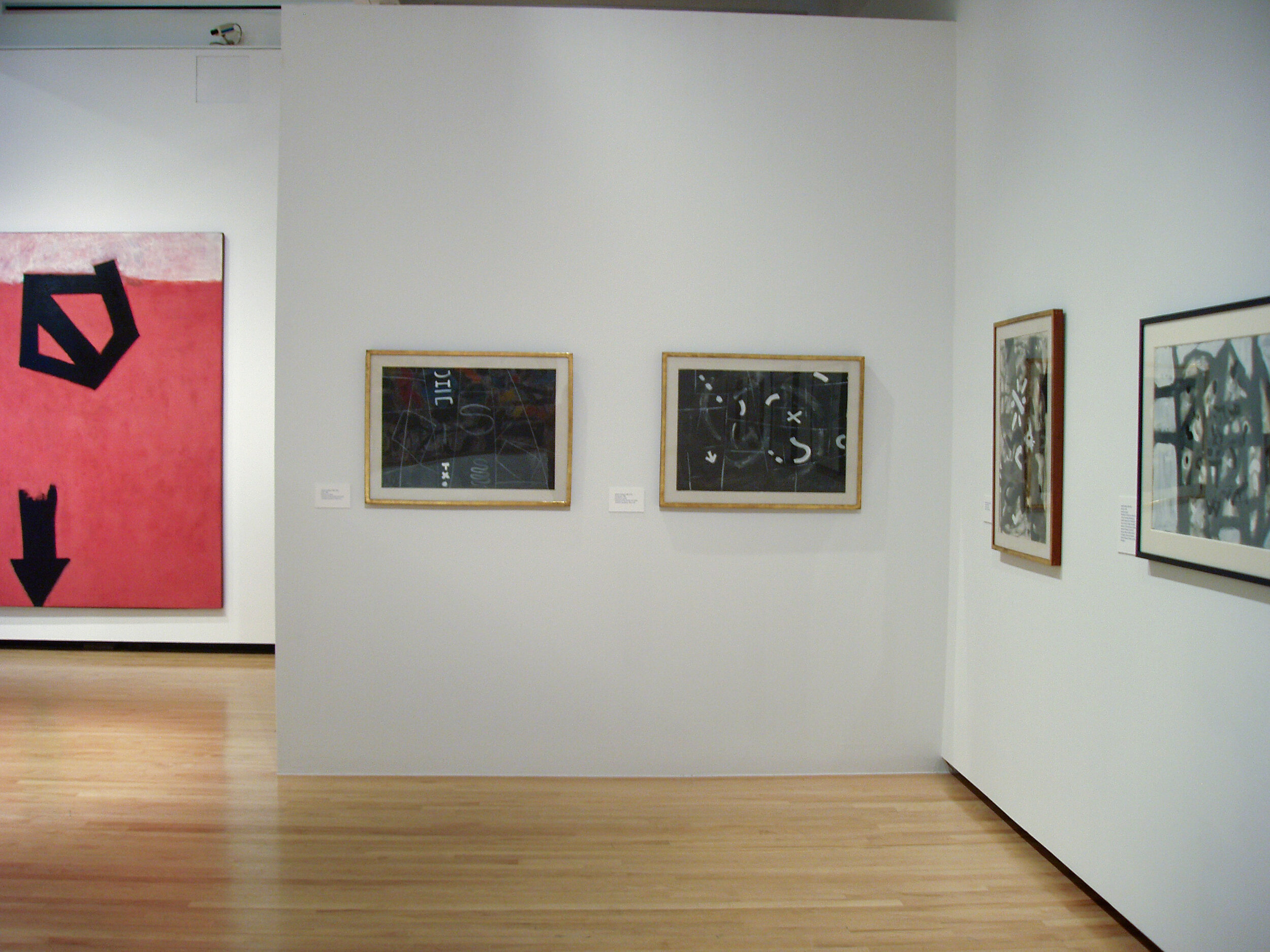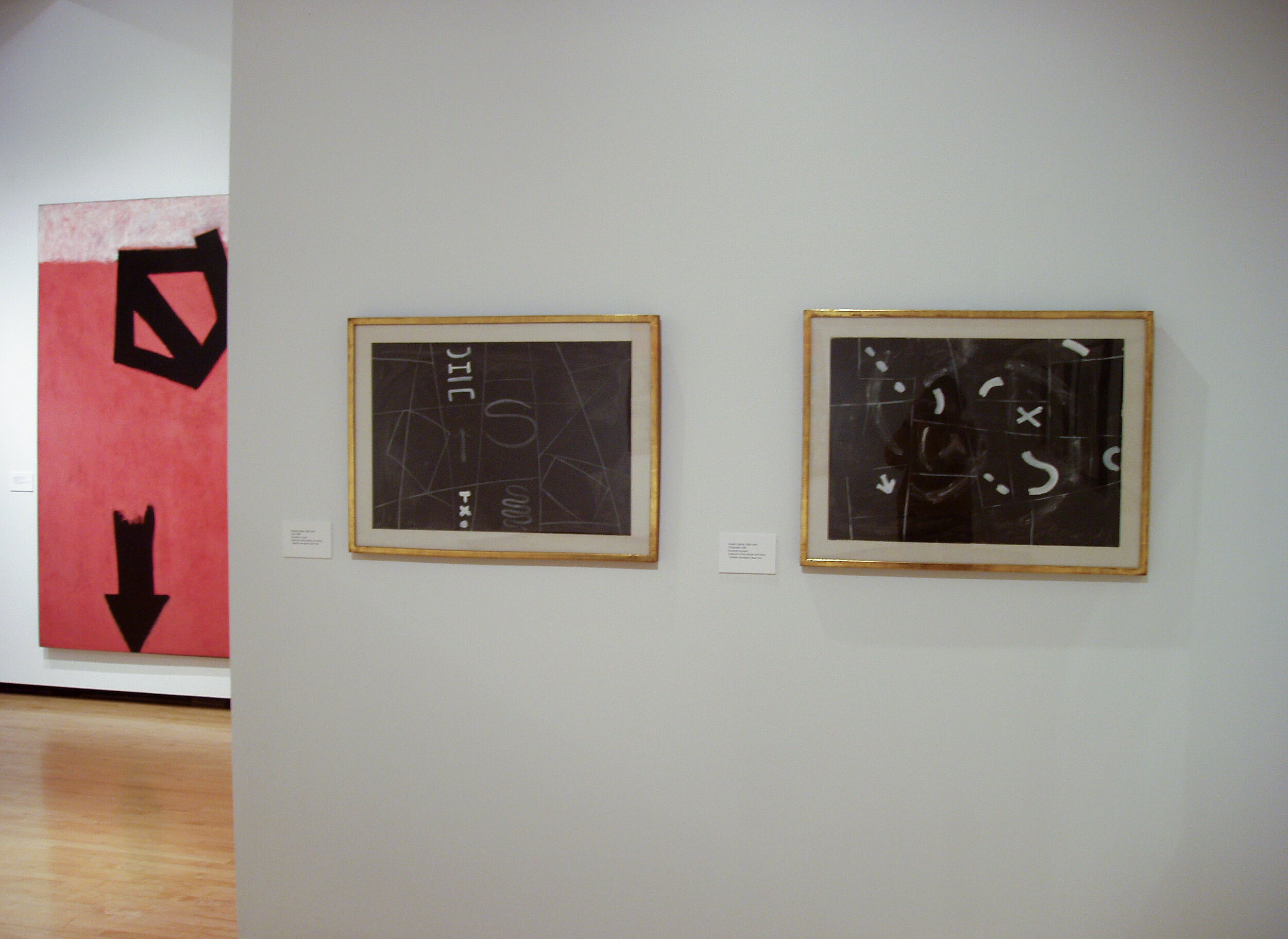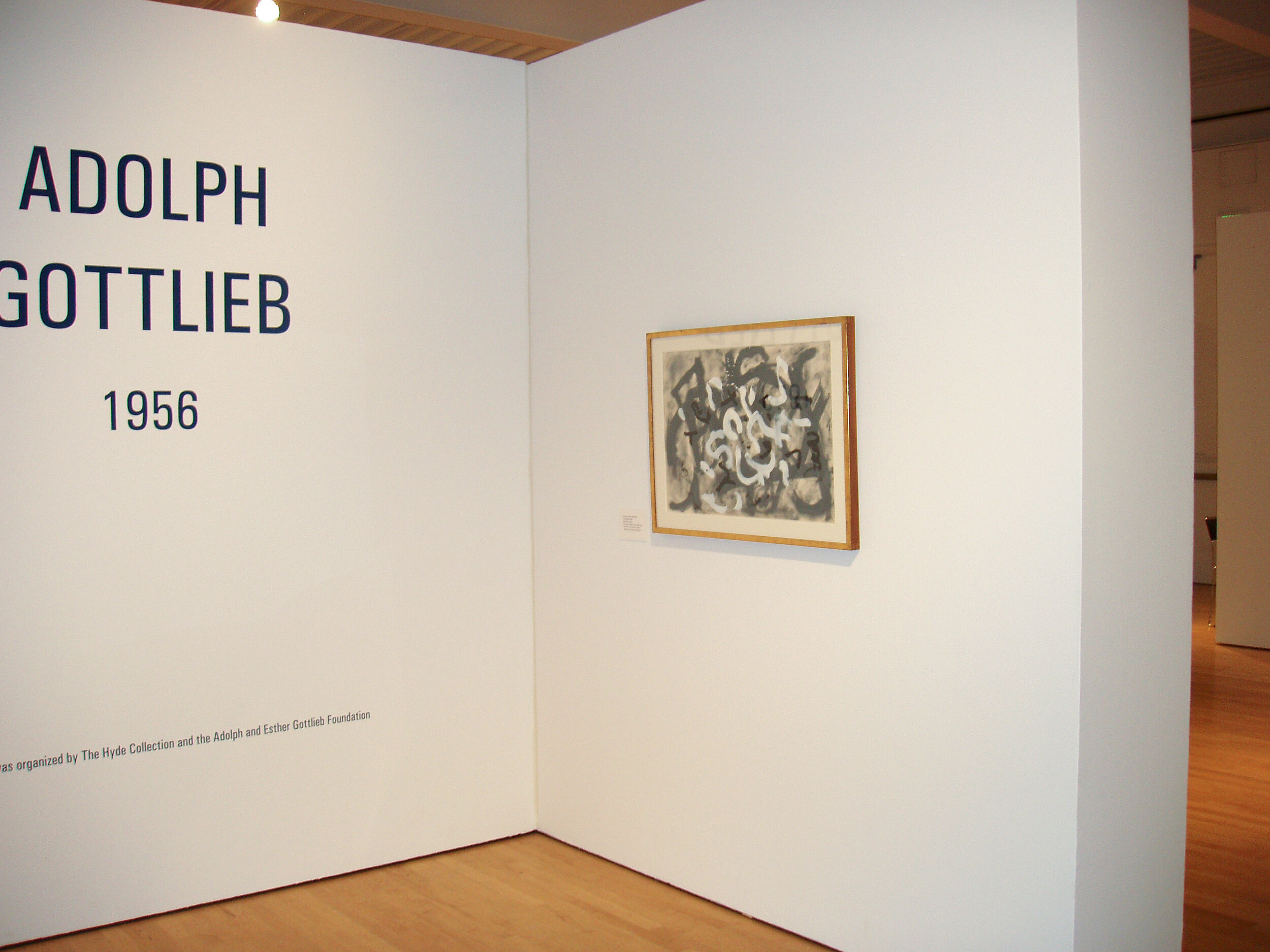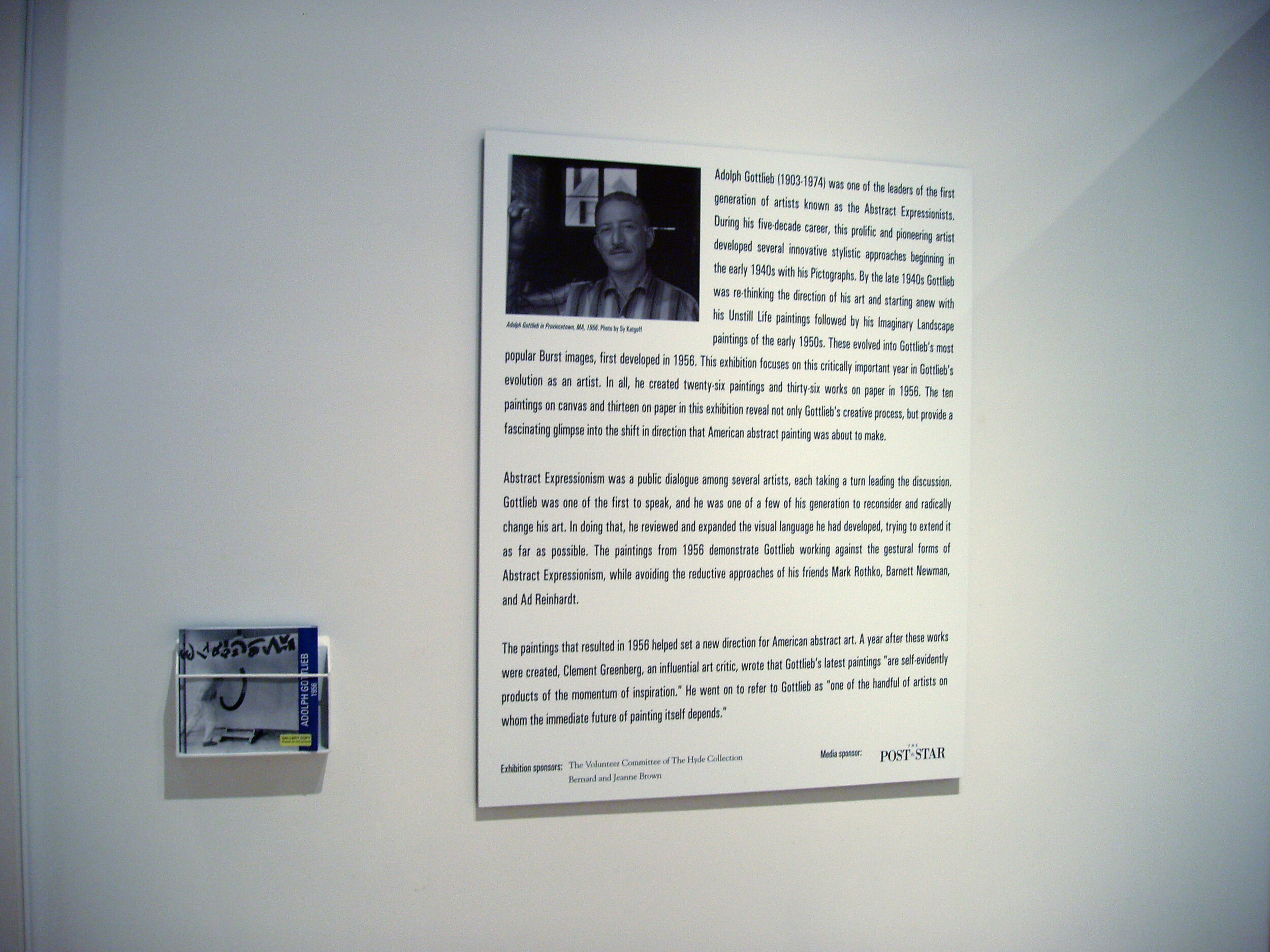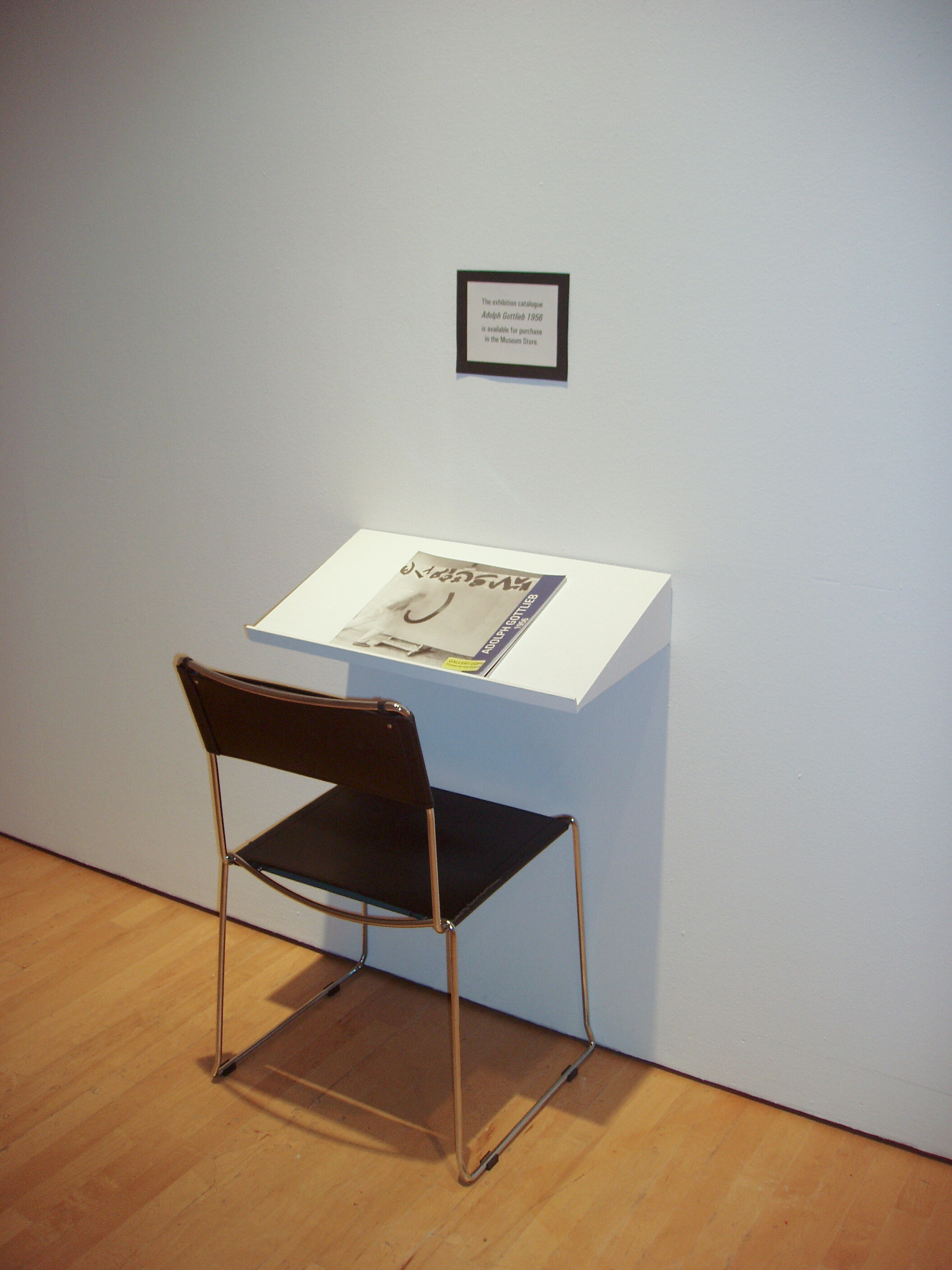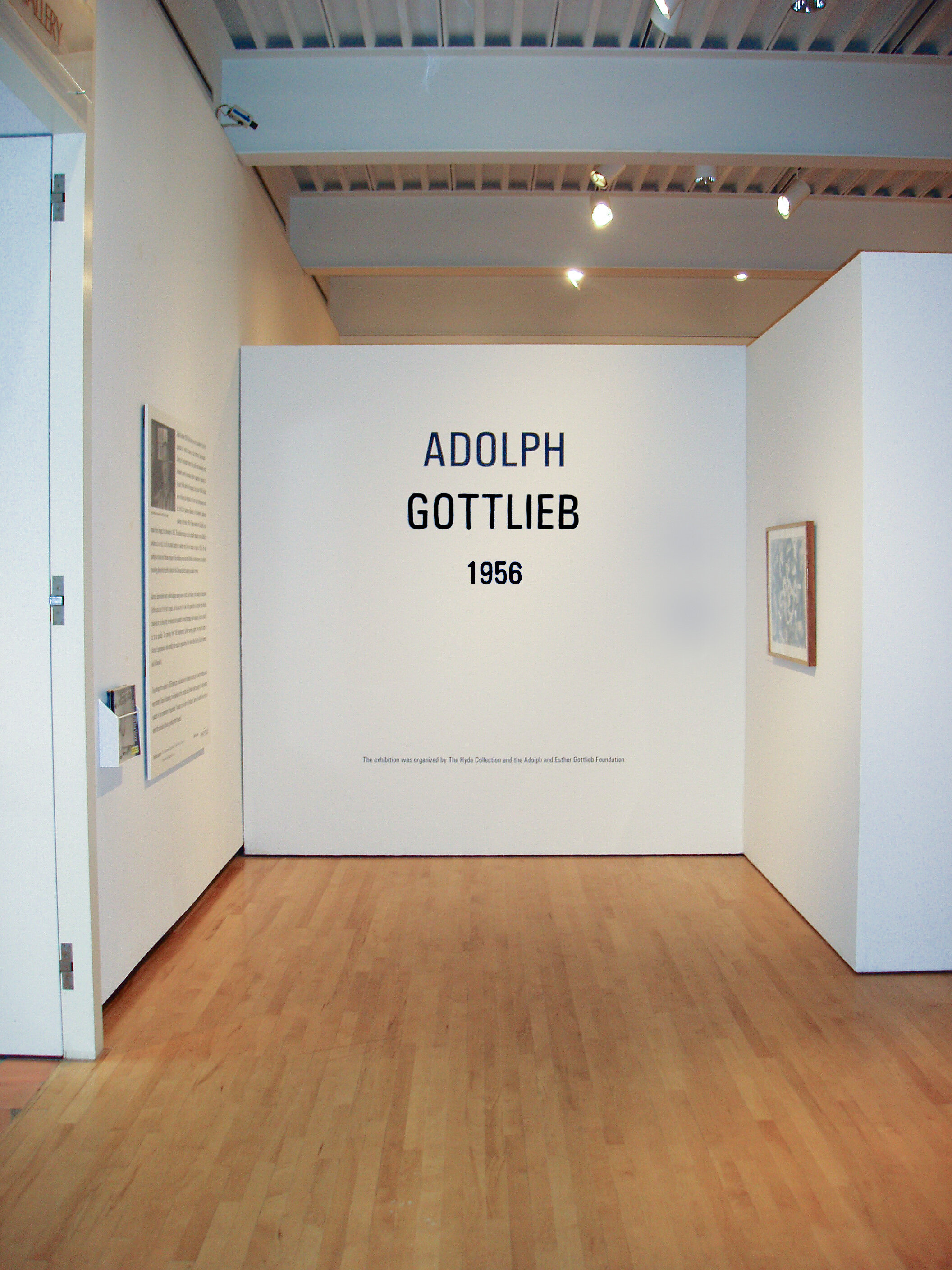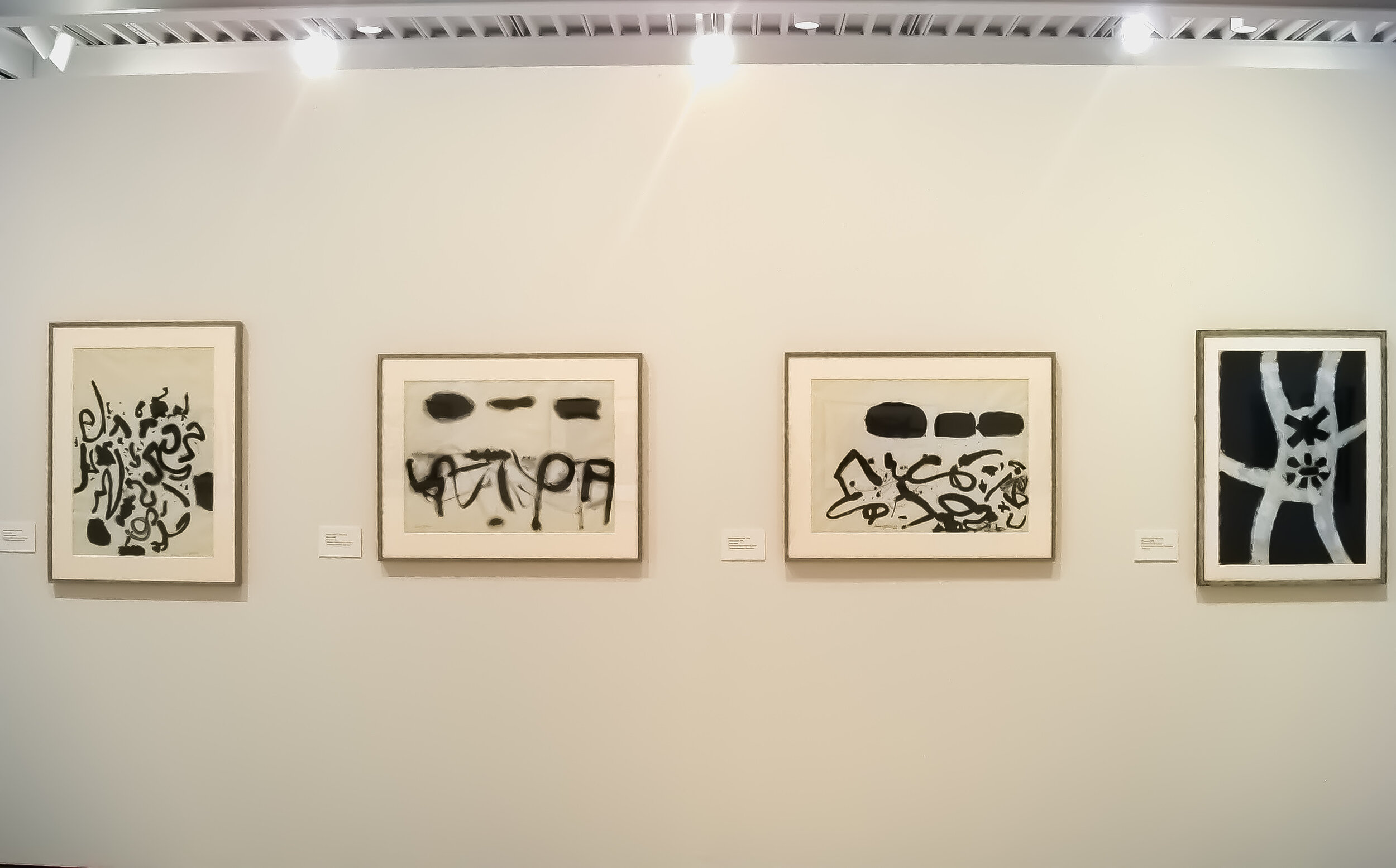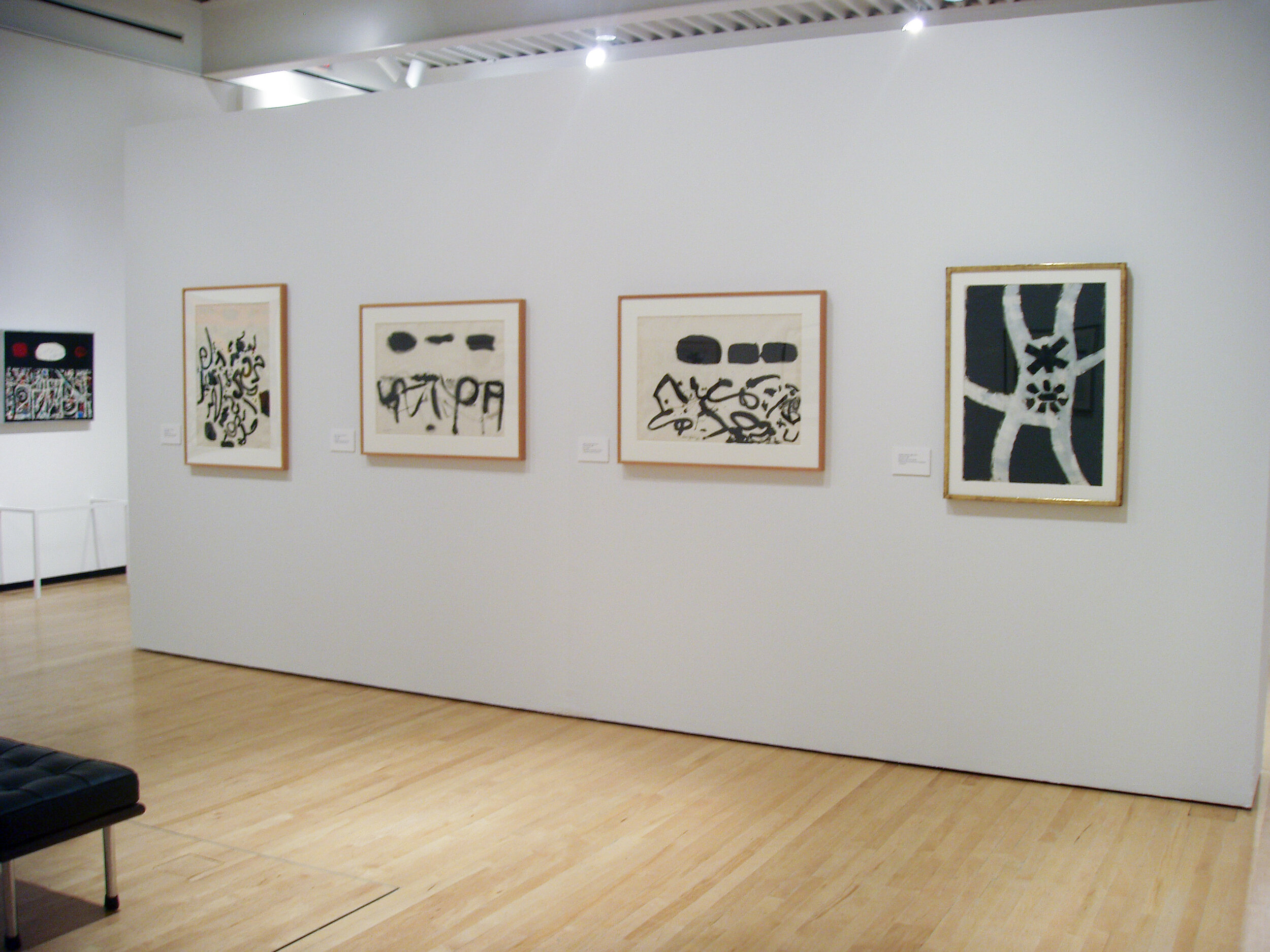Adolph Gottlieb: 1956
September 25 - December 11, 2005
The Hyde Collection, Glens Falls, New York
Cover of Adolph Gottlieb: 1956 exhibition catalog
“[Gottlieb's] explorations in the year 1956 left us a richer body of work than any other single year of his career. They are a glimpse into the range of ideas and emotions that he was willing to take on, and to his dedication to making paintings that were vital in terms of his personal standards and vast knowledge of visual art. Within the body of work completed in 1956 are the seeds for all Gottlieb’s paintings of the next seventeen years.”
- Sanford Hirsch
Adolph Gottlieb (1903-1974) was one of the leaders of the first generation of artists known as the Abstract Expressionists. During his five-decade career, this prolific and pioneering artist developed several innovative stylistic approaches beginning in the early 1940s with his Pictographs. By the late 1940s, Gottlieb was rethinking the direction of his art and starting anew with his Unstill Life paintings followed by his Imaginary Landscape paintings of the early 1950s. These evolved into Gottlieb’s most popular Burst images, first developed in 1956. This exhibition focuses on this critically important year in Gottlieb’s evolution as an artist. In all, he created twenty-six paintings and thirty-six works on paper in 1956. This exhibition focuses on ten paintings on canvas and thirteen on paper that reveal not only Gottlieb’s creative process but also provide a fascinating glimpse into the shift in direction that American abstract painting was about to make.
Abstract Expressionism was a public dialogue among several artists, each taking a turn leading the discussion. Gottlieb was one of the first to speak, and he was one of a few of his generation to reconsider and radically change his art. In doing that, he reviewed and expanded the visual language he had developed, trying to extend it as far as possible. The paintings from 1956 demonstrate Gottlieb working against the gestural forms of Abstract Expressionism while avoiding the reductive approaches of his friends Mark Rothko, Barnett Newman, and Ad Reinhardt.
The paintings that resulted in 1956 set a new direction for American Abstract art. A year after these works were created, Clement Greenberg, an influential art critic, wrote that Gottlieb’s latest paintings “are self-evidently products of the momentum of inspiration.” He went on to refer to Gottlieb as “one of the handful of artists on whom the immediate future of painting itself depends.”
See more photos from this exhibition below.
